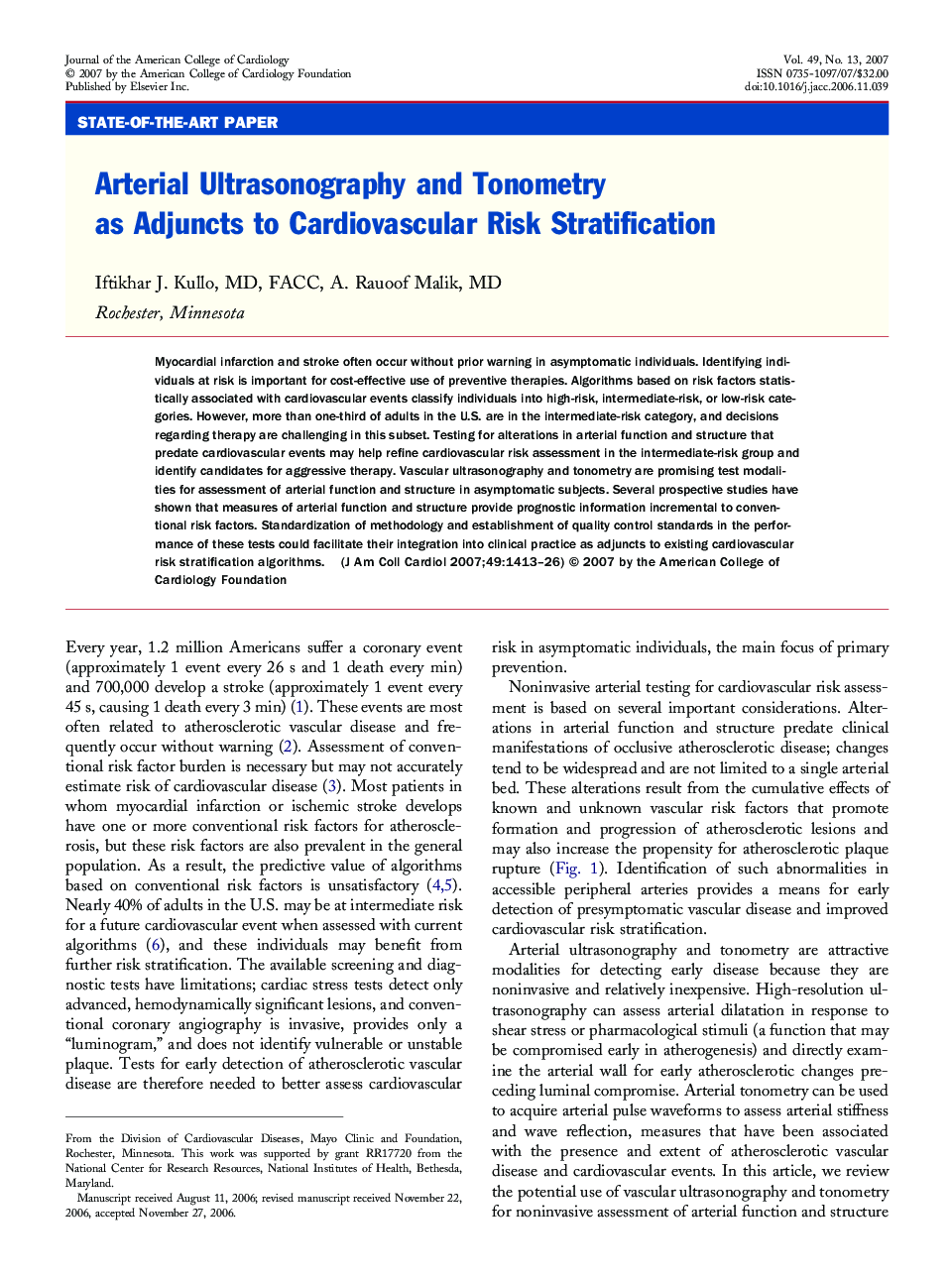| Article ID | Journal | Published Year | Pages | File Type |
|---|---|---|---|---|
| 2953285 | Journal of the American College of Cardiology | 2007 | 14 Pages |
Myocardial infarction and stroke often occur without prior warning in asymptomatic individuals. Identifying individuals at risk is important for cost-effective use of preventive therapies. Algorithms based on risk factors statistically associated with cardiovascular events classify individuals into high-risk, intermediate-risk, or low-risk categories. However, more than one-third of adults in the U.S. are in the intermediate-risk category, and decisions regarding therapy are challenging in this subset. Testing for alterations in arterial function and structure that predate cardiovascular events may help refine cardiovascular risk assessment in the intermediate-risk group and identify candidates for aggressive therapy. Vascular ultrasonography and tonometry are promising test modalities for assessment of arterial function and structure in asymptomatic subjects. Several prospective studies have shown that measures of arterial function and structure provide prognostic information incremental to conventional risk factors. Standardization of methodology and establishment of quality control standards in the performance of these tests could facilitate their integration into clinical practice as adjuncts to existing cardiovascular risk stratification algorithms.
